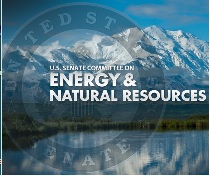Cantwell: Increasing Energy Workforce, Infrastructure Investment Should Be Our Priorities
Washington, D.C. – May 19, 2015 – (RealEstateRama) — Today, U.S. Senator Maria Cantwell (D-Wash.), ranking member of the Senate Energy and Natural Resources Committee, discussed her energy workforce bill and urged consideration of carbon reduction technologies. She also raised concerns with existing coal leasing policies, which fail to ensure a fair return to taxpayers or account for carbon pollution.
“I think there is a very compelling case to be made that the most pressing issues for this committee to address deal with modernizing our aging energy infrastructure,” Sen. Cantwell said. “If there are specific priorities with respect to supply, they involve bending the curve even more sharply downward on carbon, given the tremendous costs our changing climate is already imposing on businesses and communities across our country.”
Read her full statement here:
“Thank you, Chairman Murkowski, for this important hearing, and thank you to our witnesses for joining us today.
“Once again, we have a bundle of various initiatives or legislative proposals before the committee generally related to the topic of energy supply.
“In setting the context for the discussion, I think it’s helpful to once again review what we’ve just heard recently about the current supply picture last month from the Energy Information Administration (EIA).
“First, growth in U.S. energy production—combined with modest growth in demand—will contribute to a continued decline in U.S. energy imports.
“Second, energy use by residential consumers and in the transportation sector is also expected to continue to decline—driven by improvements in energy efficiency technology. Meanwhile, the industrial sector is expected to post the strongest growth. We are making strides.
“Third, electricity prices are expected to rise about 18 percent—driven primarily by fuel costs for natural gas and coal, which are expected to rise 88 percent and 25 percent, respectively.
“But with renewable technology, the fuel is free. Even while EIA has been criticized for underestimating growth in renewable energy production, the agency does project a 72 percent increase in clean energy generation between 2013 and 2040—accounting for more than a third of new capacity.
“Taken together, the set of findings suggests to me that the trajectory is generally positive from an energy security perspective. It’s also a good reason the first Quadrennial Energy Review (QER), on which Secretary Moniz testified last month, focused so heavily on energy infrastructure.
“To quote the QER, ‘this focus was chosen because the dramatic changes in the U.S. energy landscape have significant implications for … infrastructure needs and choices. Well-informed and forward-looking decisions that lead to a more robust and resilient infrastructure can enable substantial new economic, consumer service, climate protection and system reliability benefits.’
“Based on the QER, I think there is a very compelling case to be made that the most pressing issues for this committee to address deal with modernizing our aging energy infrastructure. If there are specific priorities with respect to supply, they involve bending the curve even more sharply downward on carbon, given the tremendous costs our changing climate is already imposing on businesses and communities across our country.
“From a competitiveness perspective, it also seems to me that we should be focused on supply-related policies that advance energy technologies that are going to be comparatively less expensive in the future.
“According to the Department of Energy’s 2014 Revolution Now report: ‘by 2014, rooftop solar panels cost about 1 percent of what they did 35 years ago, and solar PV installations were about 15 times what they were in 2008.’ The report outlined similar trends for wind.
“The Department of Energy expects different renewable technology costs to drop another 10 to 20 percent in the foreseeable future. And these projections don’t even take into account rapid technology changes that can further drive down the cost-curve.
“Another example from my home state is innovation related to turbines that power our dams. BPA, the Army Corps and regional utilities have worked together on new designs that are optimizing fish survival rates and producing more power at the same time. Replacement turbines at one particular dam are achieving greater than 97 percent fish survival, and once all 10 new turbines are updated, it is anticipated to result in enough power to serve an additional 12,440 homes.
“So energy efficiency is all across the board.
“With these trends in mind, it’s well worth this committee’s time and attention to focus on policies and programs that are going to help accelerate U.S. leadership on energy supply technologies that are becoming a greater portion of the resource mix both at home and globally.
“But given projections about domestic oil and gas production under current law, the need to legislate lease sales for federal resources in the Outer Continental Shelf is not at all obvious to me.
“This is especially the case at a time when we are going to have a lot of choices to make. There will also be lots of discussion on the rationale to lift the current ban on crude oil exports.
“But there are many lingering questions about the adequacy of our oil spill response capabilities and potential environmental impacts.
“The chair just mentioned revenue sharing. I want to note that the various revenue sharing proposals before the committee would give producing states a larger portion of the money generated from the development of federal resources on the Outer Continental Shelf.
“These are not new concepts. But they are concepts that have brought this committee to a stand-still on multiple occasions, given a mix of concerns—fiscal policy concerns, concerns from senators from interior states and concerns about adequate recovery of receipts on certain existing leases in the Gulf of Mexico.
“Already, the harsh budget realities at the federal level are impacting the efficiency of the way we go about permitting energy infrastructure.
“Among the findings in the QER that has not yet received much attention is the fact that ‘federal agencies responsible for infrastructure siting, review and permitting have experienced dramatic appropriations cuts and reductions in staff.’ And as a result, ‘the overall effort to improve the federal siting and permitting processes have been stymied.’
“I do not discount the budget challenges that we face for a variety of reasons; but given the budget challenges at the federal level—which are already impacting the way we permit energy infrastructure—additional revenue sharing is difficult to pencil out.
“I also want to take a moment to revisit something I mentioned earlier, which is the rising cost of coal. While coal costs are projected to go up 25 percent, coal exports are expected to increase over 70 percent from 2015 to 2040.
“I raise that again because it’s worth noting: in the west, you can typically lease a ton of federal coal from the Bureau of Land Management for $1 or less. That’s one dollar or less. Taxpayers get $1. Then years later we have to deal with almost 2 tons of carbon dioxide from that 1 ton of coal. And the government’s current best guess is that 2 tons of carbon pollution will cost the American public more than $70 in damages.
“Our fossil fuel leasing laws were passed long before we knew all of this about carbon. But now we know. The fact that we are essentially subsidizing this coal that we will subsequently export fails a pretty simple test of common sense policies in the public interest.
“I want to thank the committee and the chairman for holding this hearing and for the witness testimony we are going to receive today. But once again, I think we have a very broad hearing and we’ll have lots to do to try to prioritize these various proposals before the committee. Again, I hope we can come together on focusing on infrastructure.
“Thank you, Madam Chairman.”













